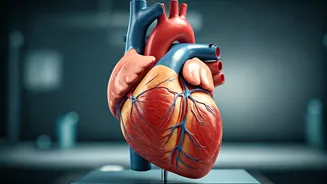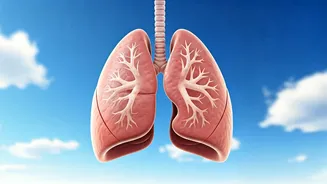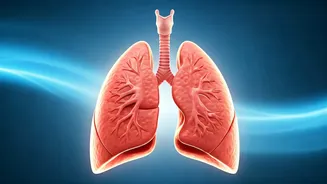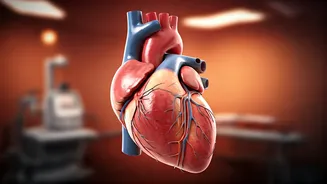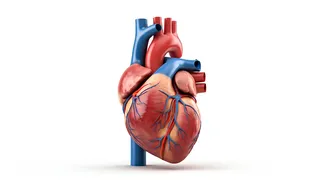Initial Lung Assessments
Our lungs work hard every single day. They are the engine of our body, providing life-sustaining oxygen and removing carbon dioxide. However, we often
overlook our lung health until problems arise. A thorough checkup with a doctor is always the best course of action. However, Dr. Sudhanshu Rai, a respected physiotherapist, shares three quick and easy lung tests that can be done at home to assess basic lung function. These tests are not substitutes for a medical diagnosis, but they can highlight potential concerns and help determine if the lungs might need some extra attention. These tests provide an early indication of lung health. The stair test, breath hold test, and blow test each offer different insights into how your lungs are functioning.
The Stair Test
The first test is a simple one: climb a flight of stairs. While this may seem simple, how your breathing responds afterward can reveal a lot about your lung function. After climbing, carefully observe how long it takes for your breathing to return to normal. If it takes longer than 30 seconds to regain your steady state, this could be a sign that your lungs aren't functioning optimally. Healthy lungs readily adapt to increased activity, efficiently delivering oxygen and clearing carbon dioxide. Extended recovery times may indicate reduced lung capacity. This could be due to asthma, chronic bronchitis, or other underlying lung conditions. Paying close attention to how quickly your breath stabilizes can be a good indicator of lung efficiency.
Breath Hold Test
The second test explores your breath-holding ability. The process involves taking a normal breath, then seeing how long you can hold it without discomfort. The average person with healthy lungs can hold their breath for approximately 25 to 30 seconds. To perform this test, inhale normally, hold your breath, and time how long you can comfortably sustain it. If you struggle to hold your breath for even 15 seconds, it may signal reduced lung capacity or other respiratory issues. Breath-holding duration is linked to lung volume and how effectively your body uses oxygen. Reduced hold times could indicate that your lungs aren't delivering enough oxygen or that your respiratory muscles are weak.
The Blow Test
The third test assesses your ability to control your breath, a key indicator of lung and airway health. To perform this, take a deep breath, and then exhale slowly and steadily through pursed lips, like you are trying to blow out a candle without flickering the flame. Maintain the steady airflow for about 8 to 10 seconds. If maintaining a constant breath is hard, it might suggest weak control over your airways. Such weakness could be an early indicator of obstructive lung conditions, such as chronic obstructive pulmonary disease (COPD) or asthma, where the airways constrict, making breathing difficult. This test assesses the efficiency and control of airflow from the lungs.
Benefits of Testing
While these tests do not replace professional medical advice, they serve as useful preliminary indicators of your lung health. Lung problems often develop gradually and may have few noticeable symptoms in their early stages. Early detection can greatly improve treatment outcomes and quality of life. Dr. Rai suggests these tests are particularly beneficial for those at risk, such as smokers, those exposed to air pollution, individuals with a history of respiratory infections, or those with existing chronic health issues. They are also helpful as general health checks for older adults and individuals with less active lifestyles. Moreover, these tests can be a starting point for assessing your respiratory well-being and identifying the need for further medical evaluation.
Additional Advice
In addition to seeking medical advice, certain lifestyle adjustments can significantly contribute to better lung health. Firstly, it is crucial to quit smoking or avoid exposure to secondhand smoke. Engaging in regular exercise, focusing on activities that enhance lung capacity, is another beneficial step. Breathing exercises, such as pranayama and bhastrika, can also be helpful. Lastly, maintaining high-quality indoor air by utilizing air purifiers and decreasing pollutants is essential. These steps, combined with regular self-assessment and medical check-ups, can play a significant role in preserving and improving lung health.



